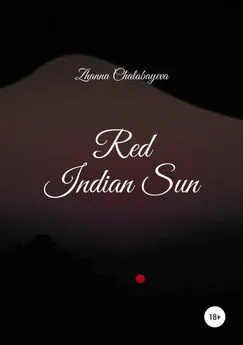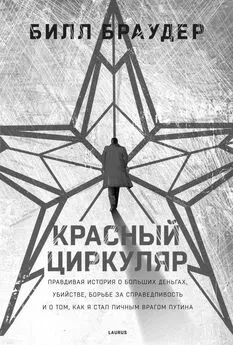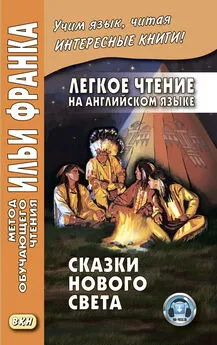Zhanna Chalabayeva - Red Indian Sun
- Название:Red Indian Sun
- Автор:
- Жанр:
- Издательство:неизвестно
- Год:2019
- ISBN:нет данных
- Рейтинг:
- Избранное:Добавить в избранное
-
Отзывы:
-
Ваша оценка:
Zhanna Chalabayeva - Red Indian Sun краткое содержание
Red Indian Sun - читать онлайн бесплатно ознакомительный отрывок
Интервал:
Закладка:
He was a guy about twenty-five years old. His face was cunning, but radiant with joy. He was thin and slouching, with a deep saddle, of medium height.
His eyes were huge, black, with long, curled up flirtatious, lively eyelashes, which contrasted so strongly with the almost dead, terrible abysmal eye. On the head was a kindergarten hairstyle which we call “Phillipok” with a long fringe slicked to his forehead. A black T-shirt hung over bony shoulders. Tight-fitting jeans showed sharp knees. The whole image was completed by enormously large ears, bulging to the sides, somewhat disproportionate to the small head. The hands and feet also looked too large in relation to the arms and legs.
We greeted, kissed each other on the cheek and went to the exit. We were met by his father, a sister with a child and her husband. I extended my hand to my future father-in-law to shake it, but he just kindly hugged me like his daughter. Unlike his twenty-five-year crumb snatcher, my future father-in-law seemed to be a good person.
I felt so relaxed and calm that I stopped worrying.
We waited some time for a car in the street near the airport. In the black heights, the stars and clouds danced Boston. My future husband and I were standing nearby, and his relatives were a little away from us. A warm night wind was blowing.
Then a white jeep drove up, we plunged and drove to the village. I was very tired from the flight and constantly fell into a dream. The road to the village took six hours. On the way, we stopped at a cafe, silently drank tea. I felt their eyes on me, and I myself looked away, somewhere on the tops of the trees, hiding my face from embarrassment. I remember green trees against the black sky, the sultry air, despite the dark time of the day, the coolness did not occur.
* * *
Haryana is located in the north of India, and its name means the abode of God. Haryana became an independent state in 1966, and before that, it was part of the state of Punjab. The capital of both states is the city of Chandigarh. The population of Haryana is over 25 million people.
The state has a highly developed engineering and agriculture. It is in Haryana where most crimes against women occur.
In antiquity about 3000–1300 BC Haryana was part of Harappa civilization, on a par with Egyptian and Sumerian.
Already at that ancient time, sewerage and drainage systems existed in Haryana. Civilization fell into decay, and then completely disappeared with the arrival of the Aryans. It is believed that the creation of the universe began from this place, so pilgrims from all over India come to Haryana, in particular to the sacred pond Brahma Sarovar.
It was on the territory of Haryana that the events described in the ancient Indian epic “Mahabharata” took place.
My future husband’s village was called Samain, it was not far from the city of Tohana, in Fatehabad district, Haryana state. About ten thousand representatives of ten different castes lived in it. Brahmins, Jats, and Banya belonged to the higher castes. The lower castes were Khati, Kumharas, Lohars, Nai, Chkhipi. Registered, that is, untouchable castes – Chamari, Balmika. Half of the population of the village was engaged in agriculture, almost 40 percent of the population was not engaged in anything.
My future husband and his family came from the lower caste of Khati, whose members were engaged in carpentry and agriculture. The father of my future husband was a carpenter, as Khati should be, the family also had a small cotton field, and my future husband himself had the profession of a welder. He was shy of belonging to a lower caste and subsequently lied to new friends that he was from a higher caste of Brahmins.
Castes arose with the arrival of the Aryan tribes in India. Aryans were nomads. There are many theories about their country of origin. They came to India in ancient times. The Aryan entertainments were divided into two groups – gambling and music and dance. The Aryans brought their views and customs, including the division of society into four castes, or classes of society. The highest of them were priests and scholars – the caste of the Brahmins. Steps below were warriors and nobles, the penultimate class of society consisted of artisans and merchants. The lowest consisted of agricultural workers, as well as workers of other professions.
Representatives of different castes did not have the right to marry among themselves, and it was impossible to move from one caste to another.
I remember one feature of life in the Indian village. By tradition, residents of the same village are prohibited from marrying each other. The nearest village, with representatives who are allowed to marry, must be within a radius of at least ten kilometers. Often, the girl’s parents begin to look for her as soon as she comes of age. Sometimes it happens that, living in the same village, young people fall in love with each other and, without obtaining the consent of their parents, they come to an agreement and run away from their native land. To prevent such a development of events, parents try not to delay their daughter’s marriage. According to the stories of local residents, because of this, many young people have committed suicide, unable to cope with the loss of their beloved.
Currently, before the arranged marriage, the bride and groom first look at each other’s photographs. If they like each other, they are introduced to each other, then they communicate by telephone, though it happens sometimes that they do not communicate at all and are not even interested. Also in India, there is a tradition to consult with an astrologer before the wedding. All people are divided into Manglik and non-Manglik.
Mangal dosha is one of the major deciding factors in Hindu marriages. A Manglik marrying a non-Manglik is considered disastrous which can even lead to the death of one’s partner. Mangal dosha is the combination in the birth chart or horoscope where Mars (also known as Mangal or Kuja) is placed in the 2nd, 4th, 7th, 8th or 12th house in the Ascendant. A person with mangal dosh in his natal chart is called Manglik. Mars is considered malefic when it is positioned in any of the mentioned houses and it leads to tensions, dissatisfactions, and disasters in married life.
My acquaintances had a case when the groom changed his mind about marrying his bride already at the height of the wedding preparations, when gold and a dowry had already been bought, and guests were invited. The girl was slightly plump and groom did not like her. However, at the first meeting he agreed to their wedding, then something went wrong. Relatives said that he had a girlfriend at work. He was tormented for several months, overcome by doubts, but did not dare to cancel the wedding. He was unhappy but did not reveal his grief in front of relatives. At this time, the bride’s family, highly respected in the city, purchased all necessary, furniture, and gold jewelry. Few weeks remained before the wedding. One day a brother asked the groom why he was so sad. The groom admitted that he actually did not want to marry because he did not like the bride. But he still was going to marry her, because it was too late to cancel the wedding and upset parents. The groom’s brother was an impulsive man. He just immediately picked up the phone, dialed the number of the father of the bride, and said that there would be no wedding. The groom was relieved, but his family lost credibility. In India, the most terrible for a person, for a family – to lose the respect of society.
I’d like to describe another case from the life of the village in which I lived. In the village of my future husband was a young family. The father of the family sold alcohol, and the attitude to the family was bad. The young man, the son of a merchant, was a handsome, kind and cheerful guy, about two meters tall. But because of the past of his father, no one got married to him. Eventually, when the guy was already over thirty, he married a village girl, divinely beautiful, young and very tall like a model. They got married and after a while selflessly fell in love with each other, and had a daughter. And then his wife started having bouts, during which she was bleeding from her mouth. Her husband was unhappy about it and was afraid of losing her forever.
I also know of a case when a young girl from a rich rural family. She had an arranged wedding, but love did not come during their life together, and she filed for divorce. Then she re-married the one she chose and was happy with her husband. In her defense, the villagers always said that since she was rich, she was allowed to do so.
It happens that a great love comes to spouses after the arranged wedding. Sometimes two loneliness live under one roof for the whole life. It is much more difficult for girls to live in a new family. Because they live in a strange family, where mother-in-law often mocks her daughter-in-law, and the husband doesn’t intercede for his wife if they don’t have a good relationship. Her parents are very far, and it is difficult to complain about the phone.
Not for nothing are parents picking up a wife for their son. In India, life is often so formed that the husband works five days a week in another city, arrives home for the weekend at the village. Therefore, his wife spends most of her time with her husband’s parents, and not with him.
In India there are few divorces, families are built for life, many Indians but not all are wonderful family men. But, as I was told, there are few divorces, because in case of divorce, the husband’s family will have to return the bride’s dowry, and not everyone can afford it. I was told by Tenardieu that there are many tragic accidents with wives, after which the widower will remarry without problems. I remembered very well how, at the beginning of our story, my future husband told me about this, not seeing anything reprehensible in the murder. As now I can see that he quite often lacked sincerity, I also guess his theory about dead wives could be false. But who knows.
the beautiful village of Samain
On the way from the airport, I fell asleep again. Finally, we arrived and stopped at a two-story house with beautiful wooden carvings on the facade. There were still mirrors on the doors and all kinds of whorls of wood. My future father-in-law talentedly made them with his own gifted hands.
On the outer wall of the house, I saw a swastika. Then I noticed that swastikas were also painted on the neighboring houses.
Then I read that a swastika is a Sanskrit word that means well-being. He embraces the idea of the four cardinal directions and the four seasons, the fusion of the male and female. The swastika is a symbol of the sun.
There is an important little detail – the position of the swastika. The vertical swastika is a sign of good, sun, and well-being. But the swastika, located at an angle of 45°, is a symbol of evil, striking out and destroy. The Nazis used just such a swastika.
Houses in an Indian village are not at all the same as in Russia. In general, the principle of building a village is different. Houses in Indian village are two-storeyed, connected by a common wall with neighboring houses, there is an open sky inside the house between the rooms, you can put a chaise lounge in the corridor and look at the stars, as well as at curious neighbors, and they can look at you. It often happens that there is a hole in the wall to transfer food to each other. In each house there are wicker beds charpai, they are hard to use. But in the heat it is very good that the base of the bed is wicker: the air circulates. We went inside. It was a carpenter’s house. Everything in the house was done by his hands, even wooden sofas and beds.
Читать дальшеИнтервал:
Закладка:


![Нэнси Митфорд - Король-Солнце [The Sun King]](/books/1072357/nensi-mitford-korol-solnce-the-sun-king.webp)
![О Генри - Бабье лето Джонсона Сухого Лога [The Indian Summer of Dry Valley, Johnson]](/books/1076181/o-genri-babe-leto-dzhonsona-suhogo-loga-the-india.webp)






